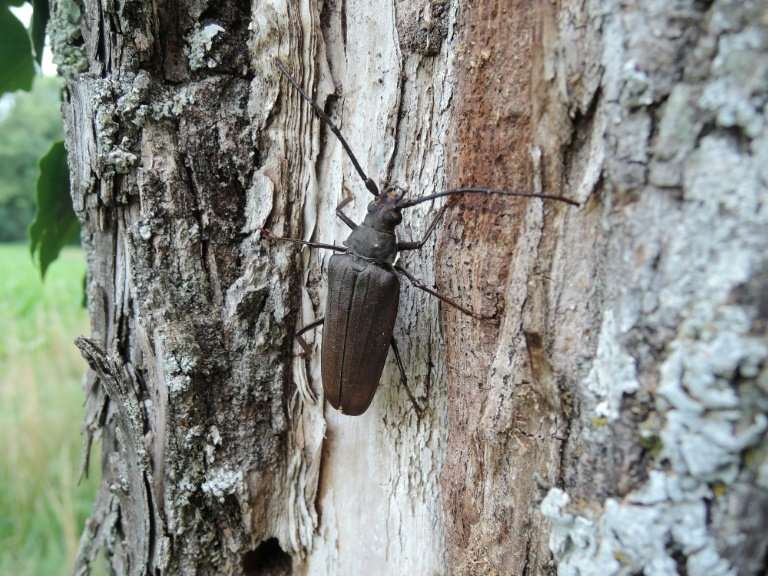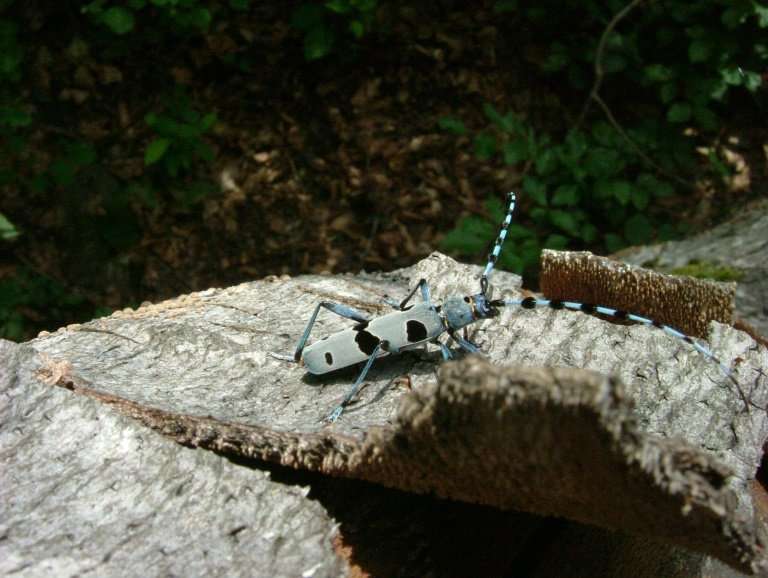Beetles face extinction due to loss of old trees

Nearly a fifth of Europe's wood beetle species face extinction because the old, decaying trees they depend on have been cleared from forests, scientists warned Monday.
Many saproxylic—literally, "dead wood"—beetles could disappear if remaining old-growth trees are not allowed to decline naturally, according to a report by the International Union for Conservation of Nature (IUCN), which maintains the Red List of endangered animals and plants worldwide.
Eighteen percent of the 700 beetle species surveyed were found to be at risk, but the percentage is likely higher because there was not enough data to classify a quarter of those examined.
The 3,000 known species of saproxylic beetles need dead and decaying wood at some point during their life cycles.
The insects also play a crucial role in recycling nutrients, and provide a key food source for birds and mammals. A few are also pollinators.
"Conservation efforts need to focus on long-term strategies to protect old trees across different landscapes in Europe," said Jane Smart, director of the IUCN's Global Species Programme.
"This will ensure that the vital ecosystem services provided by these beetles continue."
The loss of trees across Europe is the main driver of the decline, according to the report, based on research by 80 experts.

The beetles, and other wildlife, are also threatened by urbanisation, the expansion of tourism, and the increased frequency and intensity of wildfires in the Mediterranean region.
The Red List update tagged Stictoleptura erythroptera—which seeks out large trees with deep cavities—as "vulnerable" to extinction.
Another species, Iphthiminus italicus, has declined due to tree farming and wildfires. It was classified as "endangered", an even more precarious status.
The report calls for integrating conservation strategies into forest management.
"Currently, management practices lead to the transformation of wood pastures into either woodland or grassland, destroying the essential vegetation mosaic many saproxylic beetles need," said Luc Bas, head of the IUCN's European office.
© 2018 AFP


















